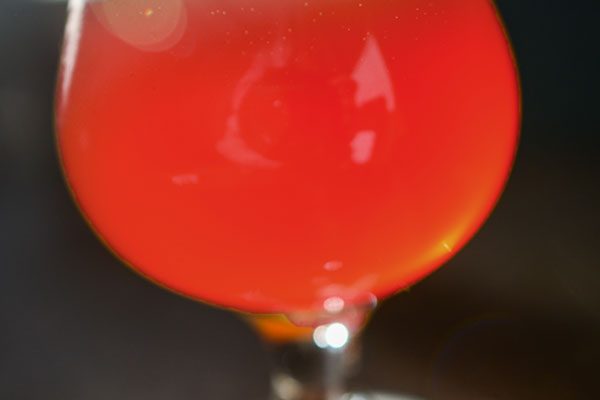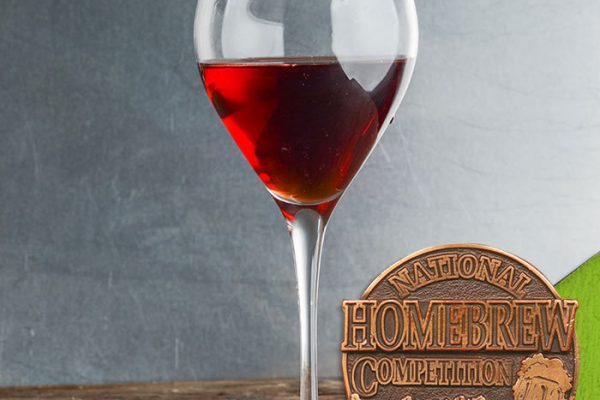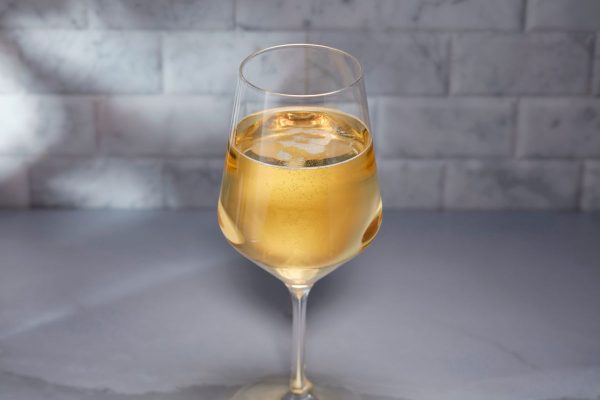
The following beer recipe is featured in the March/April 1999 issue of Zymurgy magazine. Access this issue along with the archives with Zymurgy Online!
France has produced hard cider (as distinguished from unfermented juice, or sweet cider) for hundreds of years, though for much of that time the drink was reserved for the wealthy. Around the 16th, century producers began adding water to their "apple wine." Though this practice diluted the flavors, it lowered the price and made the beverage more widely available. And here we are, in modern day, and homebrewers across the world are producing their own ciders, whether traditional French-style or their own take on the crisp, flavorful beverage.
This recipe adds a whole other flavor dimension to the tart sweetness of traditional apple ciders with the addition of cherries. It was originally featured in "Cider Tasting Notes and Food Suggestions" by Thomas J. Walsh in the March/April 1999 issue of Zymurgy.
The following beer recipe is featured in the March/April 1999 issue of Zymurgy magazine. Access this issue along with the archives with Zymurgy Online!
France has produced hard cider (as distinguished from unfermented juice, or sweet cider) for hundreds of years, though for much of that time the drink was reserved for the wealthy. Around the 16th, century producers began adding water to their "apple wine." Though this practice diluted the flavors, it lowered the price and made the beverage more widely available. And here we are, in modern day, and homebrewers across the world are producing their own ciders, whether traditional French-style or their own take on the crisp, flavorful beverage.
This recipe adds a whole other flavor dimension to the tart sweetness of traditional apple ciders with the addition of cherries. It was originally featured in "Cider Tasting Notes and Food Suggestions" by Thomas J. Walsh in the March/April 1999 issue of Zymurgy.
Ingredients:
Spy Cider:
- 5 gallons (19 L) fresh apple juice from Northern Spy apples
- 2.5 tsp. (12.4 mL) yeast nutrient
- 5 Campden tablets
- Red Star Premier Cuvee wine yeast
Sour Cherry Cider:
- 5 gallons (19 L) Spy Cider
- 5 lbs (2.27 kg) sour cherries
- 6 cups (1,419 mL) sugar
- 2 cups (473 mL) sugar
- 2 cups (473 mL) water
Specifications:
Yield: 5 gallons (19 L)
Original Gravity: 1.062 / 1.068
Final Gravity: 0.990 / 0.995
ABV: 9.5% / 9.6%
Directions:
Spy Cider: Add yeast nutrient, additional sugars, honey, or fruit to cider. Crush Campden tablets and stir in. Allow to sit for 24 hours, then make yeast starter with 1 cup (237 mL) warm water, 0.5 tsp. (2.5 mL) yeast nutrient, 0.25 tsp. (2.5 mL) citric acid, 2 Tbsp. (30 mL) sugar, and 1 package of yeast. Let starter sit while stirring cider vigorously until all of the Campden tablet is dissolved. Add yeast starter to batch and allow to ferment in primary 7–10 days. Rack into glass carboy and allow to sit until done. Sour Cherry Cider: Add cherries to Spy Cider with yeast nutrient and crushed Campden tablets. Proceed with basic recipe for Spy Cider with the exception that the cherries need to be stirred down (the cherries will be floating on top) twice a day for 3–4 days and then gently removed from the surface of the cider. Continue fermentation until done according to Spy Cider recipe. Boil together sugar and water to make a simple syrup. When Spy Cider is done, rack into a soda keg. Add enough sugar to take the tartness off the cider, but not too much to make the cider overly sweet. Force carbonate until correct amount of carbonation is achieved. Remember, the sugar syrup will eventually ferment out, making the cider dry again, and the process may have to be repeated if necessary.




Share Post